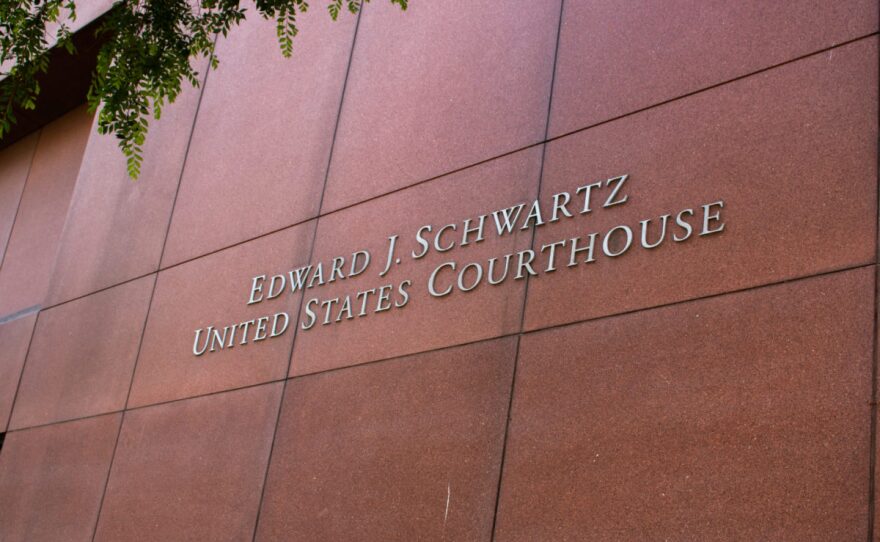The local federal court’s plan for how it will select potential jurors is drawing fire for what many critics believe is an insufficient attempt to increase jury diversity, an issue that has persisted for decades.
Late last year, the Southern District of California, the federal court district that covers San Diego, issued a new plan, and the public had until Dec. 31 to comment on it. Lawyers, community organizations and legal experts all submitted letters arguing that the new plan will continue to produce federal juries that don’t actually reflect the community. They provided several recommendations for how the court could expand its pool of potential jurors, which could help increase jury diversity.
“We believe it is vital that every qualified member of our community have the fair opportunity to participate as jurors in the broad variety of cases litigated in our federal courthouses,” wrote several community organizations in one letter. “Yet federal juries in this District do not reflect the whole community. We think the District can do better.”
The Southern District is “knowingly engaging in behavior that excludes citizens from jury service by race,” said Geneviéve Jones-Wright, executive director of Community Advocates for Just and Moral Governance and president of the Earl B. Gilliam Bar Association, who was a signatory on several of the letters. There has been a “consistent and persistent underrepresentation of African Americans” in local federal juries, she said.
“If you have more people who are prone to convict someone because they don’t understand why someone would commit a crime out of necessity or it’s hard for them to accept and acknowledge that an officer could lie, falsify documents or make a wrongful arrest because of their limited experience with the police, then that compromises a jury,” Jones-Wright said.
U.S. District Judge Dana Sabraw declined to comment because the issue is currently under consideration by the judges.
“Diverse jury pools are critical to ensuring our clients’ rights to a jury drawn from a fair cross-section of the community under the Sixth Amendment and the Jury Selection and Service Act of 1968,” wrote local federal defense attorneys in a different letter. “But achieving the goal of diverse jury pools is not only important to criminal defendants. Diverse jury pools also encourage public confidence in the justice system, improve the quality of jury deliberations and provide all citizens an equal opportunity to serve as jurors.”
Criminal defendants have a constitutional right to have their cases heard by a jury made up of their peers. But in reality, Blacks, Latinos and other groups are often underrepresented in jury pools and disproportionately removed by prosecutors during the jury selection processes, said Nina Chernoff, an associate professor at CUNY School of Law and one of the authors of a letter to the clerk from law professors and social scientists concerned about the plan.
While a lot of attention is given to how peremptory strikes, which allow lawyers to exclude a certain number of jurors, are used to remove potential Black and Latino jurors, Chernoff said, there also simply aren’t diverse enough juror pools to begin with. And local jurisdictions actually have a lot of discretion in how they ensure that a more diverse pool of jurors ends up at the courthouse.
“When you’re observing jury selection – what strikes and challenges are being made – you’re seeing the very last stage in the process,” Chernoff said. “But all of the upstream stages of the jury selection process are essentially invisible because they are part of a computer program or administrative.”
Chernoff said she compared the district’s jury plan against national best practices and noticed several issues.
Perhaps the most blatant, she said, was its sole use of voter registration lists as a source of finding potential jurors.
All of the letters highlighted this issue, and recommend that the district also use other lists, like DMV records or lists of resident tax filers.
According to district reports from 1999 through 2019 that were analyzed by several local bar associations and defense attorneys, Black residents are consistently underrepresented in local federal jury wheels and pools.
“From 1999 to 2019, the Southern District’s single-source method for jury pool selection has resulted in — at best — 62.2% of the expected African American citizen representation in the jury wheel,” the letter reads, referring to the court’s master list of potential local jurors. Of those qualified for jury service who receive notices, jury pools can be randomly selected when they are needed for specific trials or grand juries.
The other federal court districts in California, according to the letters, require other lists in addition to the voter registration list to create the jury wheel. California recently passed a law requiring state courts to add the list of resident state tax filers to their sources, but federal courts operate separately from state courts.
Census data shows that voter registration rates are higher for White people than for Black, Latino and Asian populations, the letter from professors and social scientists notes.
In 2004, the 9th U.S. Circuit Court of Appeals’ Jury Trial Improvement Committee recommended that all federal district courts supplement voter registration lists “to increase inclusiveness and to provide better representation of the adult citizen population who are qualified to serve as jurors,” notes another letter from several bar associations and the Federal Defenders of San Diego, which provides much of the pro-bono legal defense for the Southern District of California.
The letters recommended several other ways the court’s plan could improve representation, including refilling the master jury wheel annually instead of every two years, submitting names on the jury wheels to the national U.S. Postal Service change-of-address system to correct addresses, sending follow-up notices to potential jurors who fail to respond to jury qualification notices or summons and directing the clerk to conduct periodic examinations of racial and ethnic diversity in the jury pool.
“It literally raises a question in my mind of why aren’t they doing these things?” Chernoff said. “When jury yield increases, jury diversity increases. We’re inadvertently excluding Black people by excluding people in general.”
The community organizations also suggested omitting a provision in the plan that allows blank excuses for hardship and inconvenience based on travel, since those may exclude many Imperial County residents, who are overwhelmingly Latino.
This isn’t the first time organizations have raised concerns over jury selection in the Southern District of California.
In 2017, a coalition of bar associations and the Federal Defenders requested that the district expand the source list from just the voter registration list, according to the new letter from the groups. In response, the court asked for input from the U.S. attorney’s office, which recommended a more comprehensive analysis.
“The court never changed its exclusive reliance on voter lists to identify jurors and – despite an offer from Federal Defenders and the diverse bar associations to ‘research jury plans and recommend improvements to our current jury procedures to further enhance citizen participation in our local federal courts’ – the court never responded to the offer to collaborate,” according to the letter.
Chernoff said that scrutinizing juries should be part of the ongoing examination of the criminal justice system that’s been happening across the country.
“Now is really a moment to say, ‘What about the juries who decide these cases?’” Chernoff said. “Black jurors matter. Juries not being mostly White is something the court has the power to influence with simple, administrative changes.”







